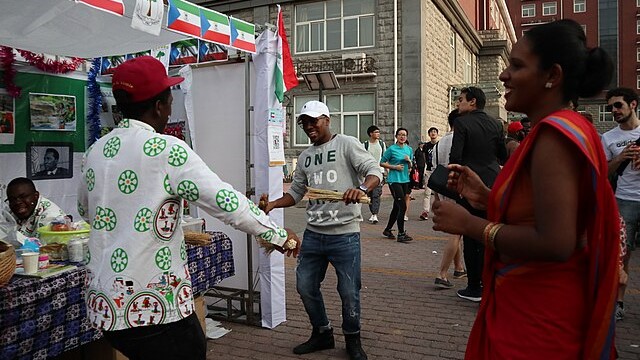On a warm evening in Malabo, the sound of drums begins to echo through a neighborhood courtyard. Children gather first, then elders, then the rest of the community. Soon, the rhythmic pulse of wooden balafons and hand-beaten drums fills the air, and dancers—draped in vivid fabrics that mirror the lush greens and ocean blues of the land—step into motion. For many in Equatorial Guinea, this is not entertainment but inheritance, a living tradition that binds generations.
Across this West Central African nation, dance remains one of the most enduring expressions of cultural identity. Each of the country’s major ethnic groups—the Bubi, Fang, and Ndowe among them—carries its own repertoire of rhythms, movements, and meanings. These traditions, often performed at festivals, rituals, or communal gatherings, operate as a form of storytelling, passing along memory and values through the body rather than the page.
On Bioko Island, home to the Bubi people, dance is inseparable from celebration. Performers move with fierce energy, adorned in brightly patterned garments that evoke the surrounding rainforest and sea. Their synchronized steps, punctuated by the beat of traditional instruments, create an atmosphere that is both festive and reverent, a reminder that dance here is as much about spiritual presence as spectacle.
The Fang, one of the largest ethnic groups in the country, offer a different vocabulary of movement. Their dances often depict scenes from daily life—hunting, fishing, or communal labor—while simultaneously preserving older myths and legends. Gestures mimic the gait of animals or the rhythm of paddles cutting water, embedding layers of meaning in each performance. What emerges is both a narrative and an act of unity, reinforcing bonds within the community.
Along the coast, the Ndowe people celebrate the sea. Their dances, often staged during fishing festivals, honor the ocean as both sustainer and storyteller. Accompanied by call-and-response songs and maritime rhythms, dancers weave movements that evoke waves, nets, and boats, transforming the performance into a living map of coastal life. The interplay of music and motion underscores the Ndowe’s enduring connection to the water that shapes their livelihoods.
Beyond ritual and festivity, dance in Equatorial Guinea often serves subtler purposes. It can be a release from hardship, a way of easing tension, or a spontaneous act of joy. In village squares and city streets alike, it is not uncommon for drumming to draw bystanders into impromptu circles, blurring the line between performer and spectator. Such moments reveal dance not only as art but as therapy, resilience, and community made visible.
Taken together, these traditions illustrate a culture in motion. The steps of the Bubi, Fang, and Ndowe are not relics of the past but living expressions of identity, adapted yet steadfast. They carry with them the layered histories of migration, colonial encounter, and survival, while affirming the creativity of a people who continue to move to their own rhythm. In Equatorial Guinea, the dance floor is everywhere, and every performance is a reminder that heritage here is not only remembered—it is embodied.
Sources
- Liniger-Goumaz, M. Historical Dictionary of Equatorial Guinea. Scarecrow Press, 2000.
- UNESCO Intangible Cultural Heritage Reports, Central Africa.
- BBC Africa. “Dance and Identity in Equatorial Guinea,” 2019.
- Noss, Philip A. Fang Oral Literature and Cultural Expression. University Press of America, 1982.

